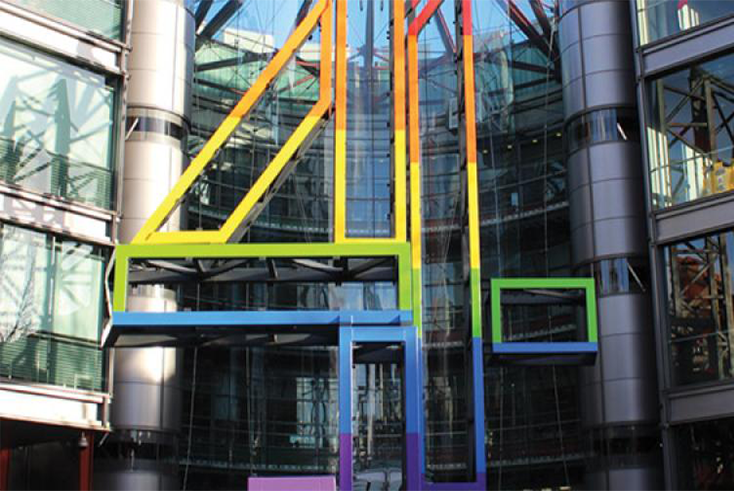Channel 4 plans cuts as it seeks to move investment to digital

“Buskers.”
“A corner shop surrounded by 10 major supermarkets.”
That is how ITV director of television Kevin Lygo and Ofcom chairman (and former Channel 4 CEO) Lord Michael Grade have respectively disparagingly described Channel 4 in recent years as it battled increasingly challenging financial straits.
The public broadcaster, which relies predominantly on linear advertising revenue, has been sharply impacted by a downturn in the TV ad market in the past year. On Monday, reports emerged that it is planning to cut as many as 200 jobs as a result.
Such cuts would amount to the highest lay-offs since the 2008 recession.
Both Channel 4 and ITV warned of a tough ad market as early as last summer. In July, ITV CEO Dame Carolyn McCall said the UK TV industry was seeing its worst advertising downturn in 15 years; in November, Channel 4 CEO Alex Mahon echoed her concerns, telling a parliament select committee that the sector was in “market shock territory“.
Mahon warned the ad market would slump by 14% in 2023 and that Channel 4 would post losses in each of the next two years following three successive surpluses since 2020.
“2023 was a particularly tough year for traditional TV advertising, with revenue down across all three of the main UK broadcasters, as well as declines in demand for TV productions hitting the likes of ITV,” Nicola Teague, head of AV at the7stars, explained.
Diversification needed
Such a downturn is likely to affect broadcasters unevenly. Whereas ITV and Sky have more diversified revenue streams, such as through their own studios producing original content that they can license to others and more robust digital offerings, Channel 4 relies predominantly on ad revenue and third-party production companies for its TV content.
Linear advertising accounts for two-thirds of Channel 4’s total revenue; total advertising revenue represents 89% of total revenue.
A spokesperson for Channel 4 told The Media Leader: “Like every organisation, we are having to deal with an extremely uncertain economy in the short term and the need to accelerate our transformation to become a genuinely digital public-service broadcaster in the long term. As a result, we need to continue to divest from our linear channels business and simplify our operations to become a leaner organisation. This will enable us to invest more in our digital future and in our remit to make distinctive and disruptive British content, increasingly focused on streaming and social channels.
“Whilst organisational change is never without personal impact, it is a necessary response to allow us to stand out and succeed in a world of global entertainment conglomerates and social media giants, so we can inspire new generations of viewers and ensure Channel 4 remains a relevant and rebellious force in British creative and cultural life for the long term. By doing so, we will further continue our support of Britain’s uniquely brilliant independent production sector.”
The spokesperson added that the broadcaster will share further details with its staff, partners and stakeholders “soon”.
In response to financial pressures, the broadcaster decided last summer to slash and freeze commissioning to cut costs, leading to a number of sudden show cancellations.
The knock-on effect for independent producers has been harmful. Angered at the cuts, Producers Alliance for Cinema and Television (Pact) CEO John McVay stated in June: “If Channel 4 wants to ease its cash-flow problems, then that’s fine — just come out and talk about it sensibly. This last-minute kick-bollocks-scramble is not good for anyone, including them, their reputation and their relationships.”
Adspend recovery in 2024
Looking ahead, Dentsu UK and Ireland chief commercial officer Steven Ballinger told The Media Leader that he expects a further year-on-year decline in the AV market in Q1 of 3-5% before it recovers later in 2024. “The more established broadcasters are under pressure from new entrants to the market (Netflix, Disney, Amazon) as linear TV audiences continue to decline,” he said. “We’re also seeing clients shift money from brand to performance (PPC and social) as the need to prove return on adspend is greater than ever in the current economic climate.”
The Channel 4 spokesperson’s stated intention that the broadcaster will “divest from our linear channels business [to] enable us to invest more in our digital future” implies a shift in resources to emphasise the need to create more robust digital growth.
Digital revenue currently accounts for 22% (£255m) of Channel 4’s total revenue; the company has a target to increase digital’s share of revenue to 30% by 2025.
However, Teague is optimistic that linear will see a recovery in 2024. “We expect 2024 to be more stable, with the market predicting growth again in 2024 as advertisers leverage the quality of UK broadcasting,” she said. “This is despite the ever-growing streaming services, including Amazon Prime, which launches its new ad-supported model this February.”
She added: “Channel 4 in particular is very dependent on the ad market, so the decision to reshape and focus on becoming a digital-first business is a no-brainer in order to diversify revenue opportunities.”
At the Future of TV Advertising Global in December, chief revenue officer Veriça Djurdjevic confirmed that Channel 4 is, like other broadcasters, considering what a more digital future would look like for the company. But she added: “We also recognise, though, that linear is still a really important mainstay, it is hugely effective and it’s a massive driver of effectiveness. How you start combining the different aspects or various offerings is going to be really critical.”
Djurdjevic admitted that TV has got “stuck” spending too long discussing the “plumbing” of how TV advertising works, as opposed to the bigger picture around what marketers and agencies are looking to achieve.
TV commercial chiefs: Broadcasters should be seen as streamers, producers and platforms




